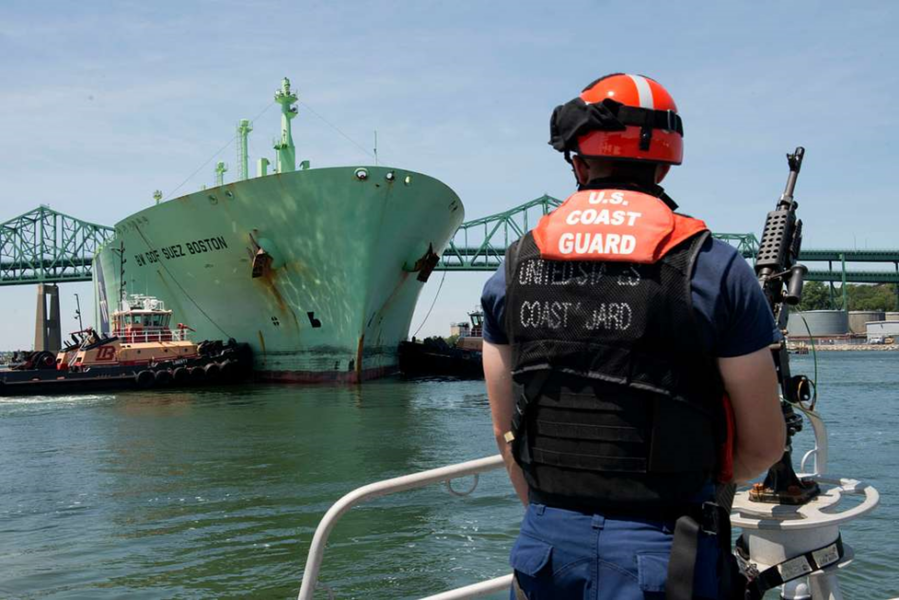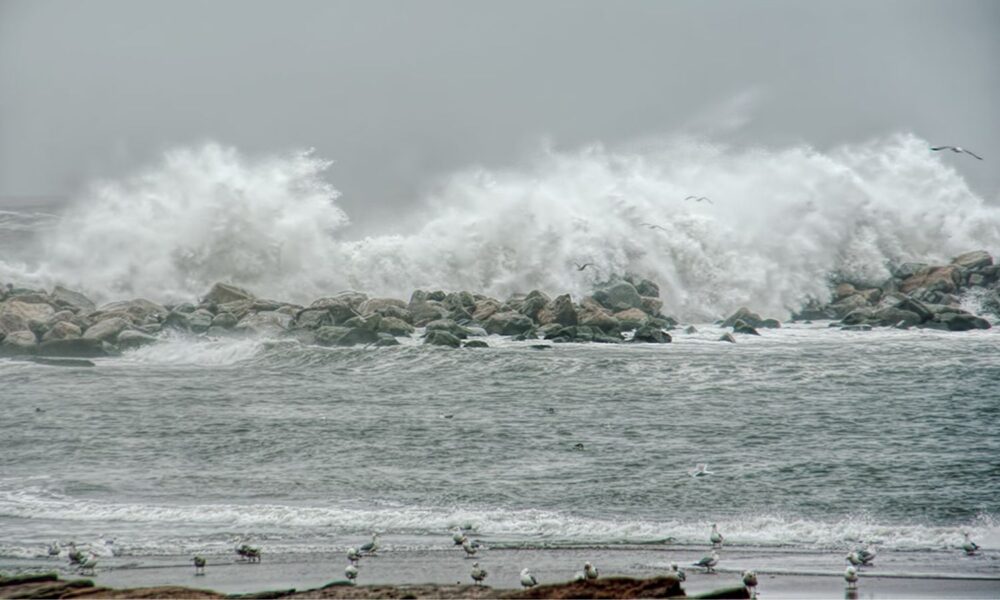It was a bitter cold day on January 5, 2018, and Massachusetts Governor Charlie Baker had no choice. An Arctic air mass had descended on New England, causing temperatures in Boston to remain below 20 degrees Fahrenheit for a week. Outside, the windchill was negative 15 degrees, and the regional grid operator was warning that the situation was dire. Demand for electricity was high, but there was not enough gas available to keep all the gas-fired power plants running. Meanwhile, the power plants that burned oil had only a few days’ worth of fuel left in their tanks.
To make matters worse, the oil truck drivers, who had been working overtime to make deliveries to power plants as well as homes and businesses, had now reached state-mandated shift limits. They could not legally deliver the extra fuel that the oil plants needed to keep running. If the oil plants could not run, the supply of power on the grid would not be able to keep up with the demand for power, which would create an “energy shortfall” that could force the grid operator to ration the remaining supply through rotating outages. This would leave people without power in the frigid temperatures.
Confronted with this problem, Governor Baker did what was necessary to protect public safety. On the afternoon of Friday, January 5, 2018, he signed a “Declaration of Emergency”” to waive the driving-time limits and allow the critical fuel deliveries to the oil plants to proceed.
Meanwhile, less than 100 miles away from the governor’s office as the gull flies, a strong wind was blowing over the ocean south of Martha’s Vineyard. Wind speed data subsequently showed that if just two 800 megawatt offshore wind projects had been operating, they would have provided 435,237 megawatt-hours of electricity—enough to have met 7% of all electricity demand in New England over the entire 16-day cold spell. (1 megawatt-hour is 1,000 kilowatt-hours.) The Union of Concerned Scientists (UCS) has calculated that an 8,000 megawatt offshore wind fleet would have provided 175,000 megawatt-hours of electricity on January 5th alone, enough to have met 42% of the demand for power in all of New England on that day.
In other words, if an offshore wind fleet had been operating, there would have been no crisis, and no need for emergency action by the governor.
A grid problem on land, a grid solution at sea
The situation in January 2018 was extreme, but it was not unique. The New England power grid has experienced close calls during extreme cold weather on multiple occasions over the past two decades, and historical weather data shows that in almost every instance, strong winds were blowing off the coast at the same time. This is not a coincidence but a straightforward matter of meteorology; in most cold snaps, the same cold-weather systems that strain our grid have simultaneously been delivering massive amounts of offshore wind energy to the region.
To put it more simply: in New England, low temperatures and strong winds tend to travel together.
This well-timed supply of energy off our coast offers an elegant solution to what until now has been an intractable problem for the regional electric grid operator ISO New England (ISO-NE): how to maintain reliability during a prolonged cold spell when demand for power is high but the region’s limited supplies of gas and oil are running low. (Coal, which has played only a small role in our energy mix in recent years, will cease to be a factor in 2028, when the region’s last coal-fired power plant will shut down due to coal’s poor economics.)
Is there enough offshore wind to make a difference?
To better understand the contribution that offshore wind could make to the winter reliability of the power grid, a new UCS study examined two sets of historical data from ISO-NE’s Variable Energy Resource time series over 22 past winter seasons (2000-2022). One data set provides a detailed record of load levels (electricity demand) during each season, and the other provides a matching record of the electricity supply from offshore wind (derived from historical offshore wind speeds). This allowed us to simulate how a hypothetical offshore wind fleet would have helped to meet demand on any given day of each past winter season.
In the first step of the analysis, we used the historical load data to determine the total daily energy demand on each day of each winter season, and then compared those values to the thresholds that ISO-NE uses to measure the degree of risk of an energy shortfall, or blackout. Demand levels above 350,000 megawatt-hours, for example, put the region at an elevated risk, while levels above 400,000 megawatt-hours indicate a higher risk, and levels above 450,000 megawatt-hours indicate the highest risk. In the graph below, representing the winter of 2017-2018, we have a clear view of the way that daily energy demand levels rose dramatically during the cold snap that began in late December, putting the region into the higher (orange) risk zone for almost two weeks:

Next, we used the historical offshore wind data to model the daily energy supply that would have been delivered by offshore wind fleets of different sizes: 1,500 megawatts (roughly equivalent to the combined capacity of the two projects under construction, Vineyard Wind and Revolution Wind), 4,000 megwatts (representing an additional 25,00 megawatts, or 2-3 more projects), and 8,000 megawatts (a fleet size that would be approached if all bids in the current tri-state solicitation were accepted). We then subtracted the offshore wind energy supply from the historical (actual) demand levels to arrive at net demand, to see the daily energy demand levels that would have remained and whether the energy shortfall risk was reduced.
As shown in the graph below, offshore wind energy supply would have made a dramatic difference. The output of even a small 1,500 megawatt fleet would have been enough to bring the region out of the higher (orange) risk zone on all but two days of the cold snap, while an 8,000 megawatt fleet would have entirely eliminated the demand driven risk:

While offshore wind is variable, the analysis showed that, from year to year, offshore wind projects would consistently have delivered enough power over the course of each winter season to greatly lower the number of days with an elevated risk of an energy shortfall. When we look at this impact over the entire 22-year period, we can see a clear progression in the amount of risk removed with each expansion of the offshore wind fleet:

A significant, and unexpected, finding of our analysis was that an 8,000 megawatt offshore wind fleet would have virtually eliminated the demand-driven risk of a winter blackout over the 22-year period, reducing the average number of days with elevated risk from 60 days per winter to just 2. This suggests that “going big” on offshore wind procurements, which would enlarge the fleet close to that size, could provide the same level of winter reliability protection that we have been achieving through much more difficult—and expensive—means.
New Englanders pay exorbitant prices to maintain winter reliability
Up until now, ISO-NE has not had the option of looking to offshore wind as a way to protect winter reliability. Instead, it has focused on increasing the supply of fossil fuels during extreme cold weather. But those efforts have encountered the same constraints that caused the problem in the first place; because New England has no fossil fuel supplies of its own, 100% of oil and gas supply must be imported. Imports depend on expensive infrastructure and transportation systems that indirectly raise the initial price of the fuel. During cold spells—the same time periods for which ISO is looking to secure new supply—temporary spikes in heating demand drive prevailing prices even higher.
Complicating matters further, shipments of liquified natural gas (LNG) into the region must be purchased in global markets, where fuel prices can be impacted by events in other parts of the world. Meanwhile, the limited run-time of the oil fleet makes its owners reluctant to stockpile too much oil, leading the ISO to conclude that adequate inventories will not be maintained without incentive payments. All of these factors have led to “astronomical” costs under ISO-NE’s most recent winter reliability programs, the Mystic Cost of Service Agreement and the Inventoried Energy Program.

Offshore wind offers a way out of our costly winter reliability problems
The UCS analysis shows that adding offshore wind to the New England grid effectively adds an abundant supply of winter energy, which would be delivered seamlessly even on the coldest days of the year. The timing of that energy delivery, when the grid is strained by high demand and fuel supply challenges, makes it especially valuable as a way to maintain winter reliability. Moreover, the resource is big enough that it can provide winter reliability benefits on a scale that could allow us to stop subsidizing oil and gas just to keep the lights on in winter.
Offshore wind is an important resource all year round, for zero-carbon electricity, pollution reduction, job creation, and much more. But it’s in the winter that offshore wind will make its greatest contribution to the power system. Investing in a large offshore wind generation fleet now will secure all of these important benefits for New Englanders, while also allowing New England governors to welcome winter weather as an energy solution.

